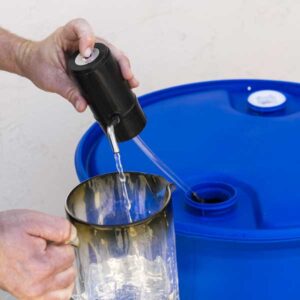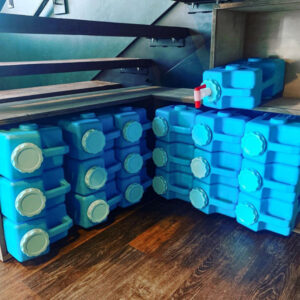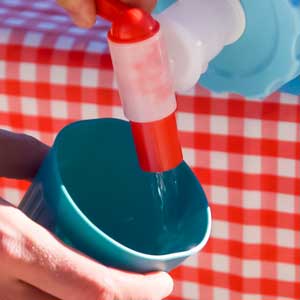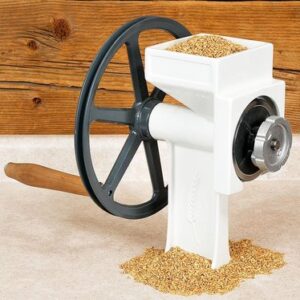by S. Easton
April 21, 2022
So many of you have a lot of hesitation and thousands of questions regarding Long Term Food Storage.’ You’ve been meaning to start. It’s on your “to do” list. You know you should… But, somehow, the thought of storing food over the long haul is intimidating. Where do I store it? In what? What foods should I choose? Will it be usable when I need it? Let us set your mind at ease and get you on the road to emergency preparedness. Should some unforeseen emergency arise months or even years from now, you’ll be prepared to feed your family. With a little planning and not a whole lot of money, you can have a complete pantry at your fingertips.
The Basics of Long Term Food Storage
Let’s start at the beginning – ALWAYS BEGIN WITH WATER. We hate to harp on it, but you know human beings can go 3 weeks without food, but only 3 days without water, so make water your first order of business. Store at least 1 gallon of water, per person, per day for drinking and sanitation water (and don’t forget your pets’ needs). It is recommended you store a 2 week supply, if possible. You’re going to need some good, sturdy, long term storage containers. The AquaBrick® Containers by Sagan® Life are the perfect place to start – they are fantastic multi-taskers. They store both water and food safely. Each brick will store 3 gallons of water or 20 lbs of dry goods.
More Long Term Water Storage Solutions
Yes, a supply of emergency drinking water should be your #1 priority. If you’re short on space a portable water filter system is essential to have on hand to purify water as needed. We heartily depend on the AquaBrick® Water Purification System. The AquaBrick® system will purify 700 gallons of ANY non-salt water. So whether you need to purify your swimming pool water (yes! It will!), contaminated tap water, lake, river or even flood water – you’re set with this powerful water filter. We suggest keeping additional DuraFlo™ Replacement Filters in your storage stash for use beyond the first 700 gallons. The high performance DuraFlo™ filter, the filter used in the AquaBrick® System, removes 99.9999% of all bacteria, such as salmonella, cholera and E.Coli; 99.99% of all parasites and protozoa, such as giardia and cryptosporidium; 99.99% virus. It also removes toxins, chemicals, pharmaceuticals and heavy metals from tap water.
 Tap That 55 Gallon Drum
Tap That 55 Gallon Drum
Another fantastic water storage option is the AquaDrum™ 55 Gallon Drum Water Purification System – it’s easy to use and now includes the power pump. Utilizing the super effective Journey™ Filter, you’ll be able to access pure, clean emergency drinking water from your drum water with the push of a button and be assured it’s clean and safe to drink, no matter how long it’s been sitting in the drum.
The Best Long Term Storage Containers – Ever
 The AquaBrick® Containers themselves, are made of BPA free high density/high impact polyethylene plastic. They only weigh 2.36 lbs. and measure 9” W x 18” L x 6” H. As mentioned, they will each hold 3 gallons of water or 20 pounds of food. Two integrated handles make full containers easy to handle, transport or pour. The Bricks are air and watertight making them ideal for long-term storage. They are stackable in several different configurations, so they’ll easily tuck away in all the nooks and crannies, to be ‘at the ready’ when needed.
The AquaBrick® Containers themselves, are made of BPA free high density/high impact polyethylene plastic. They only weigh 2.36 lbs. and measure 9” W x 18” L x 6” H. As mentioned, they will each hold 3 gallons of water or 20 pounds of food. Two integrated handles make full containers easy to handle, transport or pour. The Bricks are air and watertight making them ideal for long-term storage. They are stackable in several different configurations, so they’ll easily tuck away in all the nooks and crannies, to be ‘at the ready’ when needed.
AquaBrick® Accessories to Make Life Easier
 The Sagan Life® Spigot Cap fills your cup with a flip of the handle and turns your AquaBrick® into an outdoor / portable water or beverage dispenser. Additionally, the AquaBrick® Funnel fits atop the Brick and makes filling them so easy – without spilling a grain of rice. These two accessories make the AquaBrick® Containers an even more valuable emergency preparedness item.
The Sagan Life® Spigot Cap fills your cup with a flip of the handle and turns your AquaBrick® into an outdoor / portable water or beverage dispenser. Additionally, the AquaBrick® Funnel fits atop the Brick and makes filling them so easy – without spilling a grain of rice. These two accessories make the AquaBrick® Containers an even more valuable emergency preparedness item.
Why Use Oxygen Packs in Long Term Storage Containers
Besides initial storage containers, you’ll need oxygen absorbers to insert into the containers. These are necessary to remove oxygen from within a sealed environment, creating a nitrogen environment for long term food storage. They protect dry foods from insect damage and help preserve product quality. The oxygen absorbers extend shelf life, prevent spoilage and molds and eliminate the need for additives such BHA, BHT, sulfur dioxide, sorbates, benzoates, etc.
Botulism poisoning may result if moist products are stored in packaging that reduces oxygen. When stored in airtight containers with oxygen absorbers, products must be dry. (about 10% or less moisture content) Dry products NOT to store long-term because of moisture content, would be jerky, barley, dried eggs, granola, nuts, brown rice and brown sugar. (You can make your own brown sugar, see below)
Remember, though not always possible, the IDEAL conditions for long-term storage is keeping the containers off the cement floor and out of the garage. 75 degrees is the preferred temperature and keeps the storage area dry. Any oils stored in bottles should be kept away from light and always rotate products as needed to maintain quality. Closet shelves make good hiding places and come as close as possible to attaining optimum storage conditions.
How to Start Your Food Storage Adventure
The next time you go grocery shopping, start your journey. Buy a couple of extra cans of soup, pasta or tuna, grab an extra package of toothpaste – and whatever you do, stock up on TP! We’ve been there before! Get in the habit of buying a few extra things each time you go grocery shopping. We recommend you only buy the things your family will eat. Even though something is on sale, if your family hates it, it’s a waste of space and money.
Now, let’s talk about the best foods to start. Recommended for a one year supply, per adult, it is advised to have 400 pounds of Grains. This includes wheat. flour, rice, corn, oatmeal and pasta. You’ll want to stock up on 60 pounds of Legumes, such as split peas, lentils and dry beans, 16 pounds of Powdered Milk is on the list, as well as 10 quarts of Cooking Oil. 60 pounds of Sugar and/or Honey should be included. Last and certainly not least, stock up on 8 pounds of Salt.
Long Term Storage Hacks
A couple of things we found interesting – you can make powdered sugar from regular sugar by taking it for a spin in the blender. You can also make brown sugar from regular sugar by simply adding molasses. Use 2-4 tablespoons of molasses to 1 cup of regular sugar and voila… brown sugar. Another interesting note is that honey is probably the only food that will store for years and never spoil. Properly sealed, honey will last a long, long time.
How to Calculate Food Storage for Kids
The above amounts are quantities to sustain one adult person for one year. What about the kids? Follow the same product list above but a child 3 years and under will need 50% of the above quantities. 4-6 year olds will need 70%. 7-10 year olds, use 90% and consider everyone over 11 an adult when figuring out how much quantity you’ll need.
Once you have the basic foods covered, you can add extras to eliminate the boredom the above list would create. Canned meats, fish, fruit, vegetables, soups. stocks, bouillon, spices and sauces are easy to add. Make it a habit to grab an extra can or two of tuna or marinara sauce every time you go grocery shopping and add it to your long-term stash. And be sure to get some treats! Emergency situations can be made lighter with a few treats, brownie mix, packaged cookies, etc. When storing, always date the new product added and put it in the rear of your supplies. Rotate your items regularly, so use items in your storage, just replace them as needed. Some grains, such as wheat, white rice, corn and dry beans, if properly packed, can store up to 30 years. Canned items are good past the use-by date, as long as they aren’t rusted or bulging. But, best to keep canned things rotating. Don’t push your luck.
 Grab a Grinder
Grab a Grinder
One other great investment if you’re storing whole grains, is a hand operated grain mill. Whole wheat won’t turn into flour by itself, so check out Lehman’s for a great grinder mill. Amazon has less expensive options. You can grind your own flour or make some cornmeal, if push comes to shove.
Stash the Cash
Last but not least, money is one very necessary addition to your long-term stash. After all, life doesn’t always go as planned. The experts generally encourage you to set aside three to six month of living expenses in an emergency fund. Easier said than done, but remember, this doesn’t have to happen overnight. Put what you can away immediately when you receive your paycheck. Then live on the remainder. Pay yourself first.
We hope we’ve given you incentive to begin your long-term storage. Remember, you’ve got to take the first step and then just keep on going. The journey will reward you with peace of mind, knowing that if a job is lost, another pandemic hits, or illness strikes, you are prepared for the long haul. Beans and Rice for dinner, anyone?
